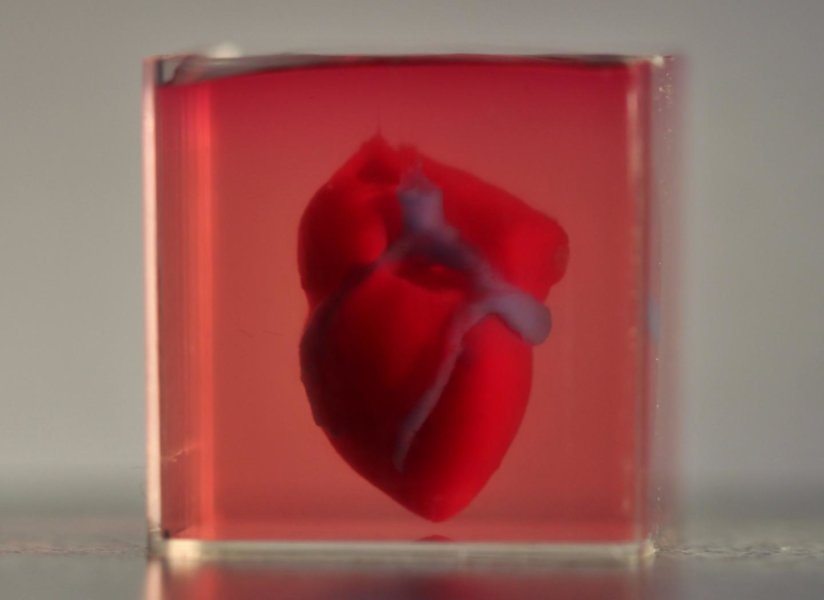
3D printing a heart is definitely a major medical breakthrough when talking about 3D printing applications. Until now, specialists of regenerative medicine — a field positioned at the crossroads of biology and technology – have only succeeded the printing of simple tissues without blood vessels.
That’s also the reason why researchers from TAU claim to be the first to achieve this major breakthrough: “this heart is made from human cells and patient-specific biological materials. In our process these materials serve as the bioinks, substances made of sugars and proteins that can be used for 3D printing of complex tissue models,” Prof. Dvir, who led the research for the study, says. “People have managed to 3D-print the structure of a heart in the past, but not with cells or with blood vessels. Our results demonstrate the potential of our approach for engineering personalized tissue and organ replacement in the future.”
How researchers conducted this research
A biopsy of fatty tissue was taken from patients. The cellular and a-cellular materials of the tissue were then separated. While the cells were reprogrammed to become pluripotent stem cells, the extracellular matrix (ECM), a three-dimensional network of extracellular macromolecules such as collagen and glycoproteins, were processed into a personalized hydrogel that served as the printing “ink.”
After being mixed with the hydrogel, the cells were efficiently differentiated to cardiac or endothelial cells to create patient-specific, immune-compatible cardiac patches with blood vessels and, subsequently, an entire heart.
3D printed hearts on the market
Until now, the big issue with regards to this application has been the functioning of the heart, be it artificial or not. Scientists have only succeeded in printing the heart that could work for a few minutes.
In this case, no information has been given regarding the duration of functioning but from what Prof. Dvir says, there is still a lot of improvements to make. According to Prof. Dvir’s explanations, the next step is to plan on culturing the printed hearts in the lab and “teaching them to behave” like hearts. Thereafter, animal models will be used to test first transplantations.
Would you like to be featured in the next issue of our digital magazine? Send us an email at contact@3dadept.com
//pagead2.googlesyndication.com/pagead/js/adsbygoogle.js (adsbygoogle = window.adsbygoogle || []).push({});
